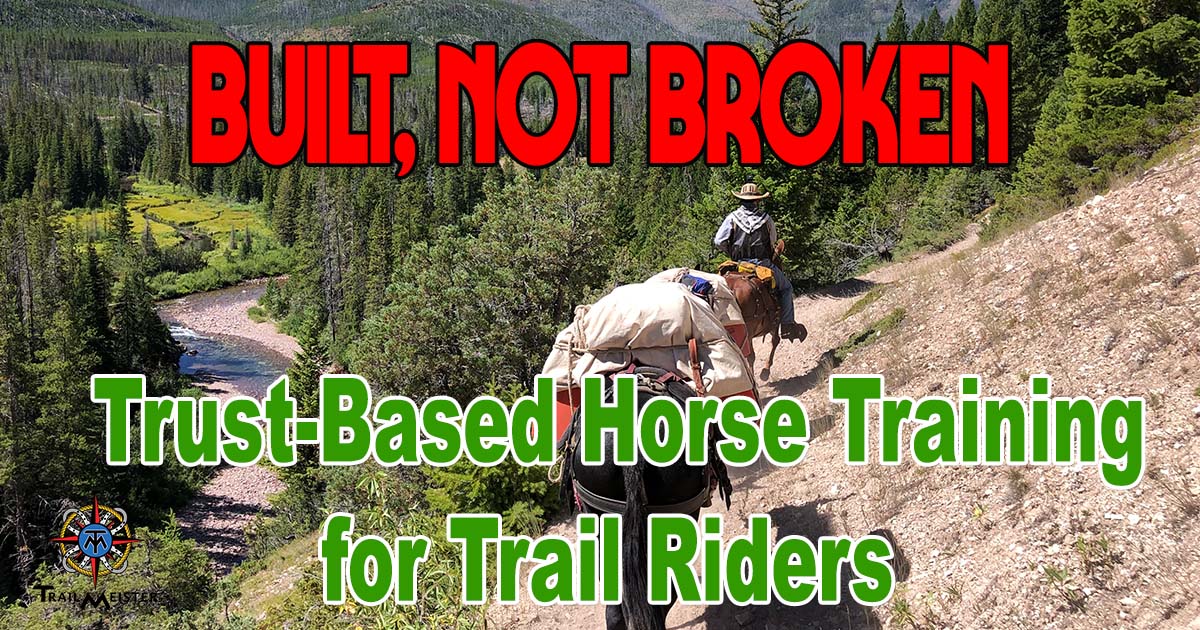For generations, the goal of horse training was to get a horse “broke.”
Broke to ride. Broke to lead. Broke to behave.
But what if I told you I disagree with the whole premise?
Historically, breaking a horse meant precisely what it sounds like: breaking its will, its spirit, and its sense of self. The goal was submission, and the process was often forceful. The same kind of breaking happens in unhealthy relationships between people: when one partner dominates the other until their voice, preferences, and independence are gradually erased.
It doesn’t always look violent. Often, it’s subtle. It happens in a thousand small moments where someone learns it’s safer to stop speaking up. They become technically present but emotionally gone.
That’s exactly what I see at some hitching rails. Long lines of mules or horses, heads hanging low, eyes dull, disengaged from the world around them. They’ve been ridden hard, handled harder, and trained in a way that silenced their spirit. They do what they’re told, but there’s no curiosity left. No spark. They’ve been shut down in the name of being “broke.”
And that’s not what I want from my friends or my animals.
I Don’t Want Obedience – I Want Engagement
I want my horses and mules to have life in them. Opinions. Expression. Even a little sass if that’s who they are. I like character in an animal. I want a horse that thinks and responds, not one that performs without awareness.
Strip all that away, and you’re left with a lifeless machine. A horse that says “yes” to everything because he’s learned that saying “no” isn’t allowed. It’s the equine version of a partner who mutters “whatever you want” not because they agree but because their opinions have been ignored for so long they’ve stopped offering them.
The Trouble with Desensitizing
One popular trend in horse training today is desensitization. Now, to be clear, done well, it has a place. A horse needs to feel safe when a tarp flaps in the wind or a plastic bag blows across the trail. But we’ve lost the point. Desensitizing isn’t supposed to mean “make the horse feel nothing.”
Too often, it turns into flooding, overwhelming the horse with stimuli until he shuts down. There’s no room for understanding, just compliance. A trainer waves a flag, rattles a bag, and pushes until there’s no reaction left. And then they call that success.
But a horse that doesn’t react isn’t necessarily calm. He might just be numb. Disconnected. Resigned. He’s not learning. He’s coping.
And that’s not partnership. That’s captivity.
The Thinking Horse Is the Safe Horse
If I’m riding in the backcountry, down a shale slope, across a log-jammed creek, I don’t want a horse that’s just waiting for the next command. I want one that’s thinking. One that feels the terrain and adjusts. A horse that uses his brain, not just his training.

That kind of thinking doesn’t come from fear or repetition. It comes from confidence, built over time through trust, experience, and a training style that encourages independent thought. It takes patience. It takes relationship.
Like a Good Marriage
Training a horse is not unlike a healthy human partnership. You don’t want a spouse who agrees with you just to avoid conflict. You want someone who contributes. Who feels safe being themselves. Who challenges you when needed and listens when it counts.
That’s not obedience. That’s trust. And that’s what I want from the animals I trust with my life in the wilderness.
Built Through Trust, Not Fear
True horsemanship isn’t about dominance. It’s not about forcing a horse into submission. It’s about communication, not control. I want an animal who chooses to work with me, because he trusts what I’m asking and understands what’s expected.
So, no. I don’t want a “broke” horse.
I want a horse that’s been built.
Built through quiet consistency. Through fair leadership. Through a relationship that rewards curiosity and builds confidence. A horse that’s been allowed to remain himself and has learned to engage with the world instead of shutting it out.
When someone asks if my mules are broke, I smile.
“No,” I say. “They’re educated. They’re alive. They’re with me.”
And that’s exactly how I want it.

Want to Learn More?
Looking to train a horse that thinks, not just obeys? Explore hundreds of articles, checklists, and resources at TrailMeister.com.
Related Resources:


